Bath Options For Hidradenitis Suppurativa
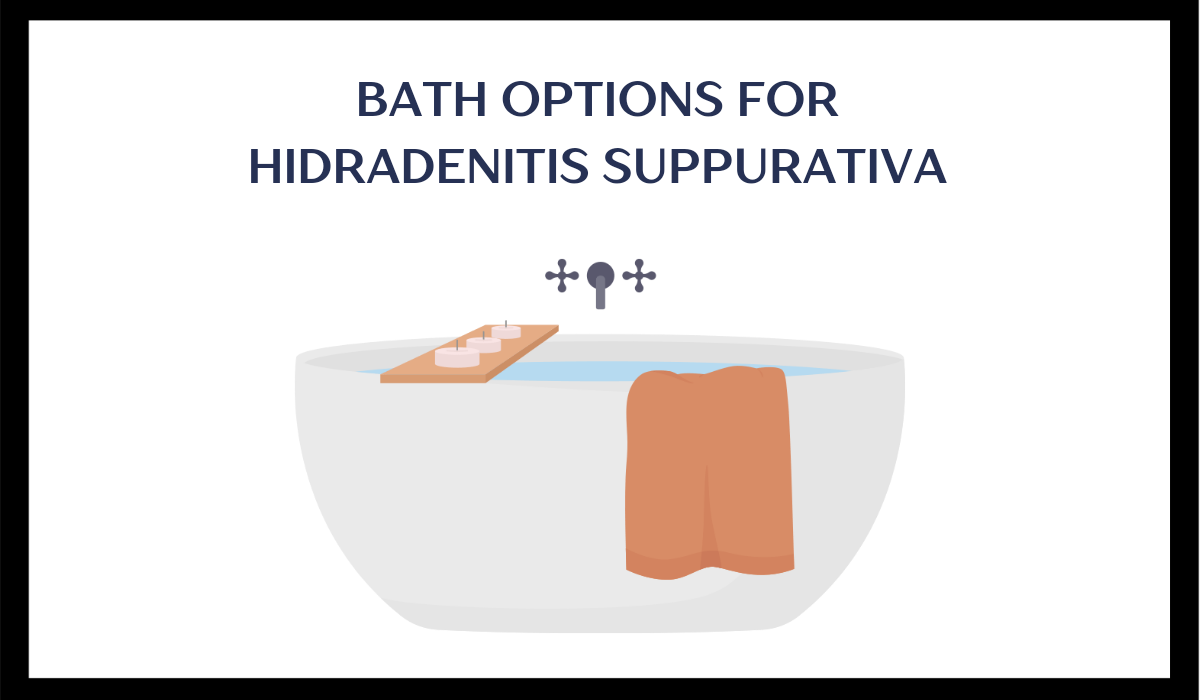
Enjoying a nice soak now and then can contribute to improved physical and mental well-being. Bathing helps prevent irritation, inflammation, and sores from dead skin cells while opening up pores. Warm baths (not hot) can alleviate symptoms for some people with HS.
The goal of this article is to simplify decision-making by offering choices, valuable tips, and hopefully some relief.
If you don’t have a bathtub, there are other options available. Find out more below. Please take note of any safety or cautionary instructions provided at the end of the article.
Bathing with Apple Cider Vinegar (ACV)

There is promising evidence suggesting that ACV can fight bacteria, balance skin pH, exfoliate, and reduce hyperpigmentation.
°Any brand will do.
How To:
- Once the tub is filled with warm water (not hot), add 1 to 2 cups of apple cider vinegar.
- Soak for up to 20 minutes.
- Rinse off thoroughly once finished.
Himalayan Salt and/or Sea Salt Baths
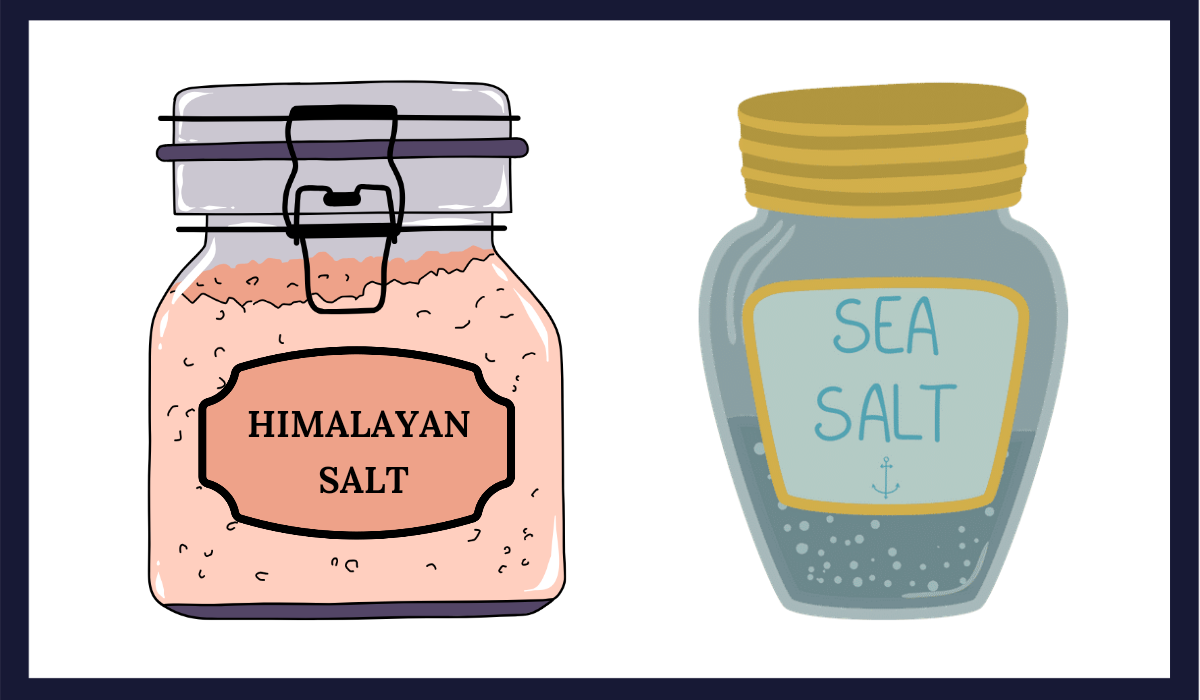
Research suggests that salt’s antimicrobial properties may help treat inflammatory skin conditions and provide benefits from the minerals. They may also minimize skin redness and irritation.
°Regular Himalayan / Sea salt is fine. You might already have one or the other in your kitchen. But if that doesn’t sound intriguing to you, try exploring Himalayan and/or Sea salt on the internet for a wider array of choices.
How To:
- Once the tub is filled with warm water, add about ¼ cup (or a handful) of Himalayan and/or Sea Salt, and give it a few big stirs to help it dissolve. It’s up to you whether to add a touch more salt, but I recommend keeping it simple.
- Get in and soak and for up to 20 minutes.
- Rinse off thoroughly once finished.
Epsom Salt Bath
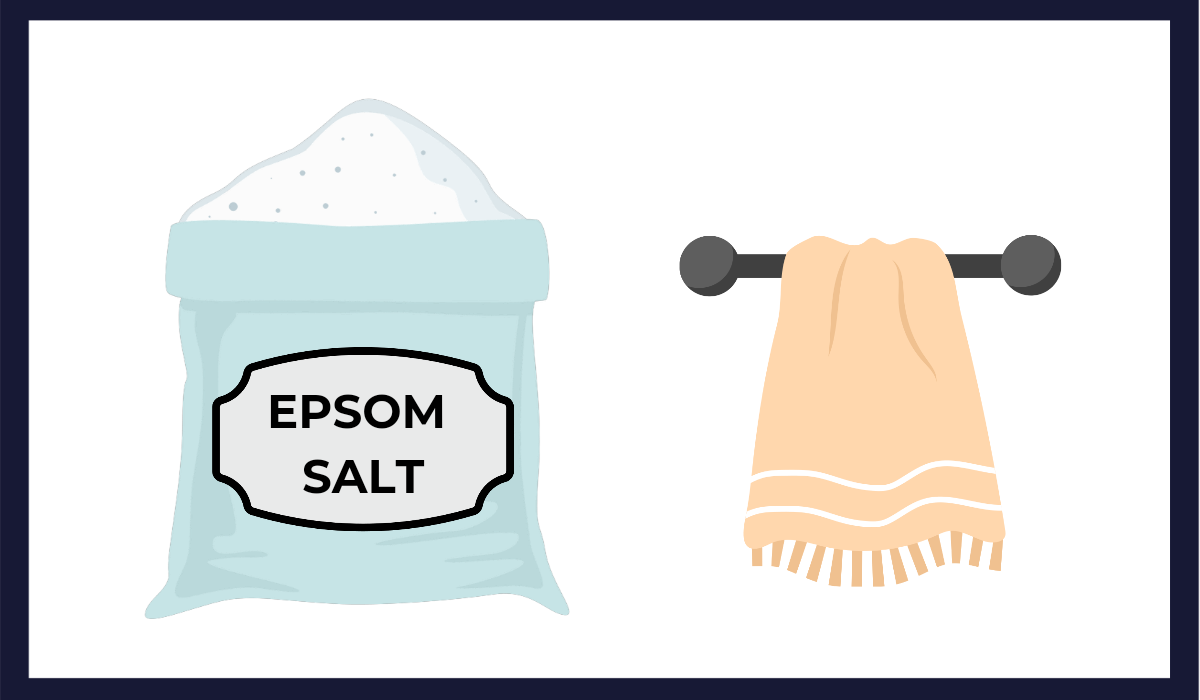
Epsom salts have been used for hundreds of years and are commonly used to treat Hidradenitis Suppurativa at home. They can help with pain relief and reduce inflammation caused by HS, while also drying out abscesses.
°It is recommended to use magnesium sulfate that is 100% pure with minimal additives; remember to check the labels.
How To:
- Once the tub is filled with warm water, start with 1 cup of salt in and give it a few big stirs to help it dissolve. You can use up to 2 cups, but with HS I would stick to 1 to 1.5 cups.
- Get in and soak up to 20 minutes.
- Rinse off thoroughly once finished.
Don’t use more than the suggested amount. Research is limited and conflicting. Some researchers found that magnesium can pass through the outer layer of skin. They also reported that the concentration of magnesium and the length of exposure directly affects how much magnesium the skin can absorb. Some research suggests that while magnesium transporters carry magnesium ions across cellular membranes, the outermost layer of the skin consists of dead cells that do not have these transporters. Always air on the side of caution.
Colloidal Oatmeal Bath

Colloidal oatmeal may help prevent the skin from drying out and keep it hydrated. Colloidal oatmeal has beneficial plant chemicals that reduce inflammation and itching. The antioxidant properties make it effective for soothing the skin.
°You can buy packets at various places like stores, pharmacies, or online. Aveeno (a global brand) offers a quality product.
How To:
- As the tub fills with warm water, sprinkle the packet of colloidal oatmeal directly under the faucet into the tub. Stir any oatmeal settled on the bottom.
- Get in and soak for about 10-15 minutes.
- Rinse off after.
Diluted Bleach Bath
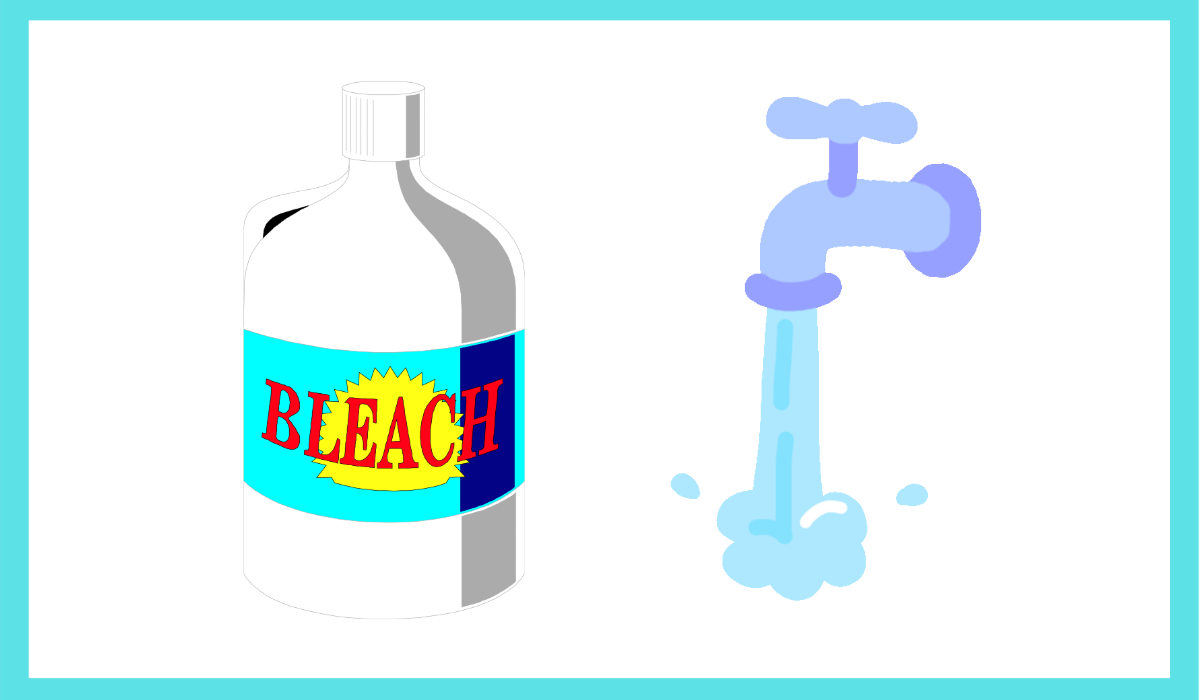
Bleach baths originated from the Carrel-Dakin Method, which was used to treat war wounds in World War I. The technique included using a diluted sodium hypochlorite solution, also called Dakin’s solution, for sterilizing wounds and surgical areas. Diluted bleach baths may help with symptom control for many skin conditions, including HS.
°Use regular household bleach, like a Clorox®
How To:
- Fill the tub half way with warm water, then add ¼ cup of regular household bleach. You may want to start with a cap full to see if it's effective and to avoid irritation. If the amount doesn’t work as well as expected, you can increase it next time.
- Get in and soak for about 5 to 10 minutes (no longer than 15 min).
- Rinse off thoroughly once finished.
Please refer to the caution and safety note at the conclusion of the article.
Finally, a regular soak in plain water without any additives
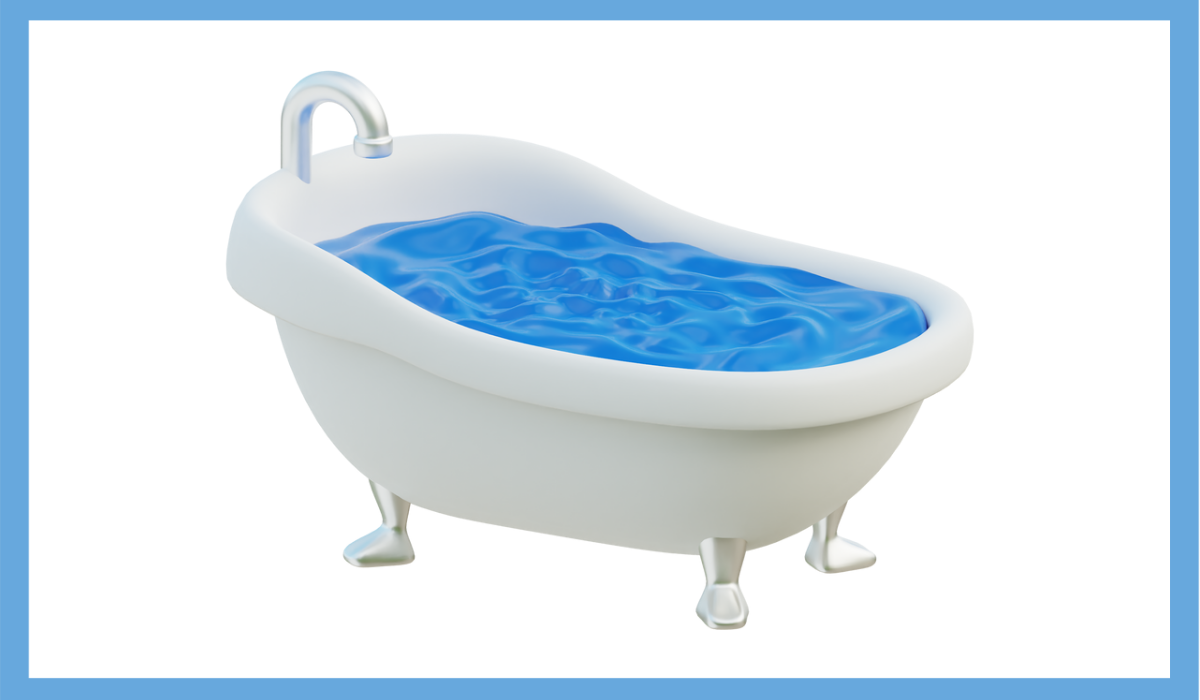
Regular soaking can serve as a giant warm compress while also offering various physical and mental health benefits. A bath can provide the ultimate self-care experience! If you’re feeling emotionally and physically capable, light a candle, put on some soothing music, catch up on a good book or podcast.
Not only does self-care matter, but it also helps alleviate stress. The toxic impact of stress on your body can be significant. There is evidence to suggest that a certain type of bath therapy could have a positive impact on individuals dealing with depression. Has the potential to decrease inflammation and manage blood sugar levels like exercise. Studies have shown that warm baths may lower stress hormones, regulate serotonin levels, enhance sleep quality, alleviate muscle and joint discomfort. This makes them especially beneficial for individuals with limited exercise opportunities.
HELPFUL TIPS
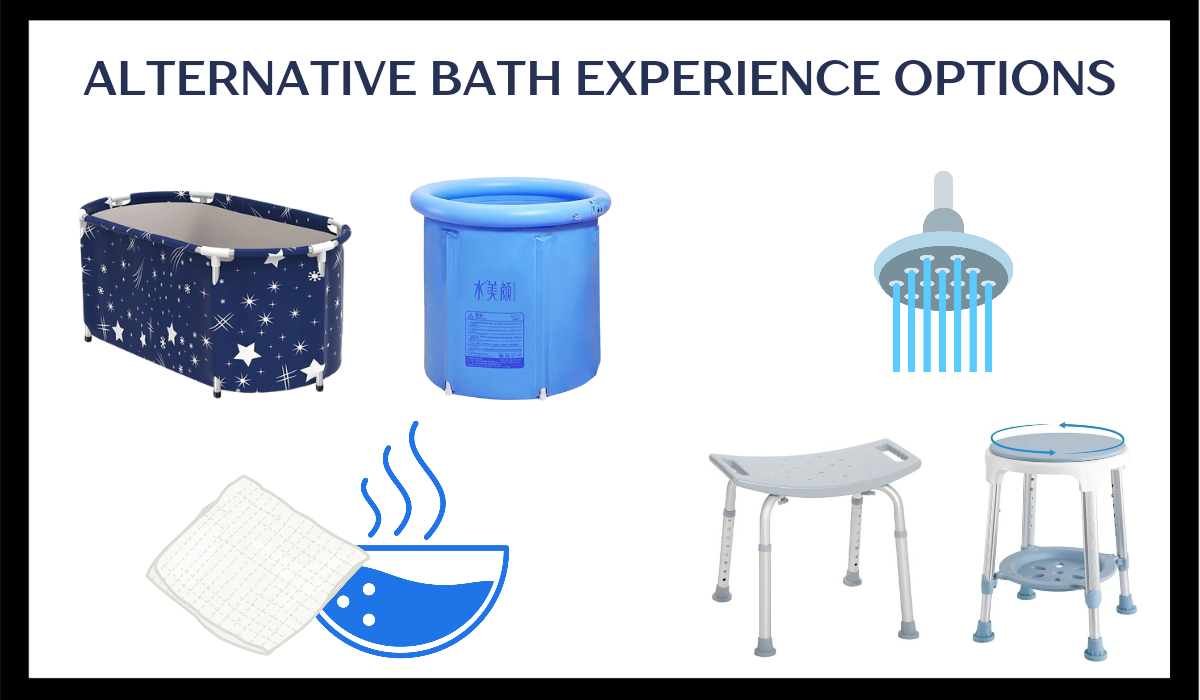
Looking for tub-like benefits without having a tub? Think about getting an adult folding bathtub that can be placed in your shower, bathroom, or anywhere else. There are various types, sizes and shapes to choose from. Worth exploring.
Get a shower chair/ bench. While the warm shower flows, you can relax and sit down. They have bath cushions, so your butt can he happy too.
Another possibility is to make moist compresses, see article HERE.
Opt for warm water, not hot, when taking a bath. It’s not a good idea to anger your HS. *Research has shown water and temperature, even more so with hot water, can damage the skin and cause inflammation.
Depending on your circumstances, bathing could worsen abscesses or wounds. If baths are causing difficulties, get out and use cool running water, cool shower or try cold packs, read more on cold packs for HS HERE. Try cooler bath water next time or avoid them altogether.
Keep your baths under 20 minutes to prevent any potential complications.
Taking a bath can lead to dry skin. If it starts to bother you, pat yourself dry gently to keep your skin moist, and then apply a gentle moisturizer without fragrance.
Avoid bathing daily as it can strip your skin of its natural oils and cause dryness. If you're a daily “bather”, incorporate showers on days when you don’t bathe. Sponge bathing is ok too!
Microbiologists advise washing bath towels every three days or after 3-5 uses. This prevents bacteria from reaching levels that could be harmful to your health. Towels absorb a lot of water and remain damp for hours, which is the perfect breeding ground for unwanted bacteria and germs.
It is advisable to wash washcloths/rags used for lathering and washing more frequently, ideally after each use.
Individuals with HS and sensitive skin should steer clear of bath bombs and bubbles, as they may lead to irritation, redness, itching. However, if your HS and skin aren’t bothered by them, feel free to indulge yourself occasionally.
A dirty tub can have a negative impact, so remember to keep it clean. To prevent bacteria buildup, spray your tub weekly with a cleaner.
The use of certain products like oils, bath bombs, salts, or others can harm a jetted tub. Make sure you refer to your manufacturer manual.
Caution and Safety
ALL instructions are specifically for a standard-sized bathtub measuring 60 inches long, 30 inches wide, and 14 to 16 inches high. If your tub is larger, consider slightly increasing the quantities.
Salt Baths:
Diabetic individuals should be cautious when soaking their feet in salt baths due to the potential for increased foot issues. Immersing feet in water can cause dryness, resulting in cracks, chafing, lesions, and wounds. Diabetic neuropathy can result in the loss of the perspiration reflex, causing further dryness.
Bleach Baths:
If you have a chlorine allergy, asthma, sensitive skin, certain types of eczema, or use medications that may make your skin fragile or thin, such as Accutane or anti-aging retinol treatments, please avoid unless your doctor tells you it is ok.
The water level should not rise above your torso or chest.
To avoid any adverse reactions, individuals with sensitive skin should test a small area before using bleach. Excessive use of bleach or frequent bleach baths can lead to dry skin. If you have cracked or excessively dry skin, you may want to avoid bleach baths.
Refrain from using pure bleach directly on your skin. Be careful not to let bleach get into your eyes.
Burning and stinging may occur if you use bleach baths on raw open wounds.
Only under a pediatrician’s guidance should a bleach bath be used for children under 2.
Unless directed by a medical professional, limit bleach baths to a maximum of three times per week.
For All Bath Options:
If you experience skin irritation, excessive itchiness, or negative reactions to the suggested options, discontinue and wash off the bathwater.
I hope you found this helpful!
Special Note: Researched, compiled, and written by Denise Fixsen. This information is backed by my 46 years of living with Hidradenitis Suppurativa, 10 years of dealing with multiple chronic illnesses, 36 years of advocacy, and continuous education. And to ensure accuracy, reliability, and trustworthiness, I incorporate peer-reviewed studies and other high-quality sources into my articles and material. I also wanted to inform you that I’ve chosen to end my collaboration with editors on my articles. Although there may be grammar errors due to brain illnesses (mostly), with this said, my content remains reliable, factual, and solid. With genuine TLC.
Medical Disclaimer: This content is solely for information, education, and support. The purpose is not to serve as a replacement for professional medical advice, diagnosis, or treatments. FDA Disclaimer: any materials mentioning treatments, procedures, supplements, etc., have not been evaluated by the FDA and are not intended for diagnosing, treating, curing, or preventing any disease or health condition.
Sources: PMC5726436, PMC10353709, doi.org/10.2147/CCID.S111019, doi:10.1001/jamadermatol.2019.4595, doi:10.1016/j.jaad.2008.11.911, doi.org/10.1038/s41598-017-18618-x, doi.org/10.1159/000520262, doi.org/10.1638/2017-0075.1, PMID: 25607907, doi:10.1155/2018/9521086, PMC5579607, DOI:10.1684/mrh.2016.0402, doi:10.1016/j.clnesp.2019.06.006, PMID: 36811730, doi: 10.1007/s00403-023-02723-1, https://doi.org/10.1111/ajd.12015, International Journal of Health Sciences and Research Vol.13; Issue: 9, PMCID: PMC8047282, PMCID: PMC8778033
Article posted on 09-09-2024
This resource article, now called “Bath Options For Hidradenitis Suppurativa.”, has been updated (rev 4), on fixsensadnessforhs.com (09-09-2024). Rev 4 contains original 2011 content along with additional current updated material.
IMPORTANT: Attention: an article version & my material is being used without my permission on an HS patient organization website without my permission. Titled-"Tailored Bathing Solutions for HS Relief" **I do not give permission to use. Thank you. .
